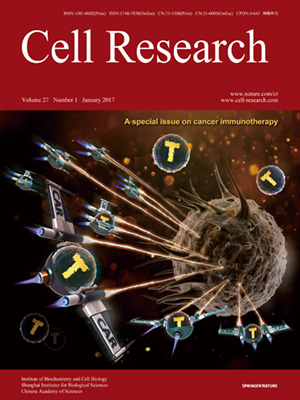
Volume 27, No 1, Jan 2017
ISSN: 1001-0602
EISSN: 1748-7838 2018
impact factor 17.848*
(Clarivate Analytics, 2019)
Volume 27 Issue 1, January 2017: 96-108
REVIEWS
Innate immune signaling and regulation in cancer immunotherapy
Leticia Corrales1,*, Vyara Matson1,*, Blake Flood1, Stefani Spranger1 and Thomas F Gajewski1,2
1Department of Pathology, The University of Chicago, 5841 S. Maryland Ave, MC2115, Chicago, IL 60637, USA;
2Department of Medicine, Section of Hematology/Oncology, The University of Chicago, Chicago, IL, USA
Correspondence: Thomas F Gajewski, Tel: +1-773-702-4601; Fax: +1-773-702-3163(tgajewsk@medicine.bsd.uchicago.edu)
A pre-existing T cell-inflamed tumor microenvironment has prognostic utility and also can be predictive for response to contemporary cancer immunotherapies. The generation of a spontaneous T cell response against tumor-associated antigens depends on innate immune activation, which drives type I interferon (IFN) production. Recent work has revealed a major role for the STING pathway of cytosolic DNA sensing in this process. This cascade of events contributes to the activation of Batf3-lineage dendritic cells (DCs), which appear to be central to anti-tumor immunity. Non-T cell-inflamed tumors lack chemokines for Batf3 DC recruitment, have few Batf3 DCs, and lack a type I IFN gene signature, suggesting that failed innate immune activation may be the ultimate cause for lack of spontaneous T cell activation and accumulation. With this information in hand, new strategies for triggering innate immune activation and Batf3 DC recruitment are being developed, including novel STING agonists for de novo immune priming. Ultimately, the successful development of effective innate immune activators should expand the fraction of patients that can respond to immunotherapies, such as with checkpoint blockade antibodies.
10.1038/cr.2016.149
FULL TEXT | PDF
Browse 2857


